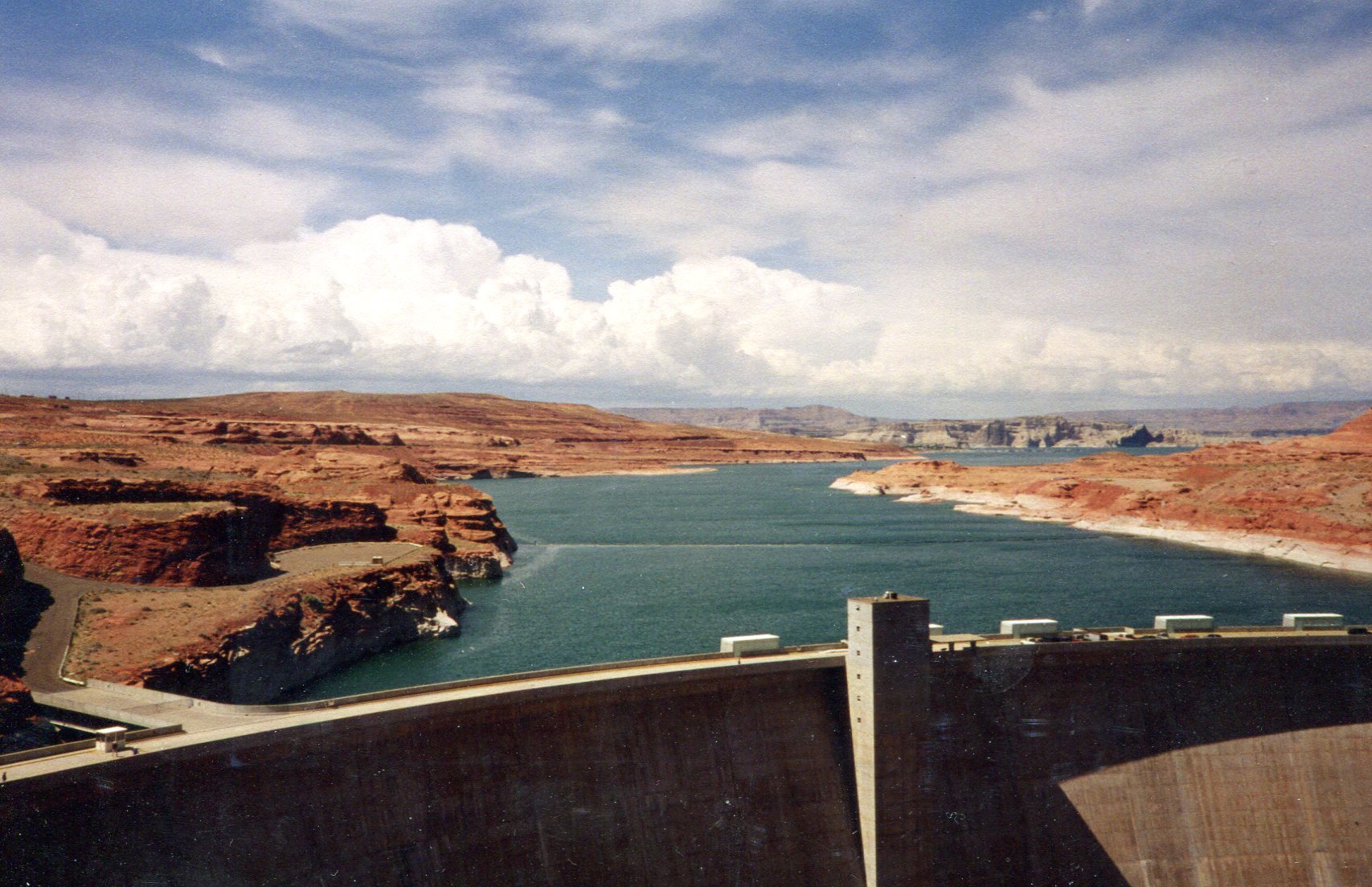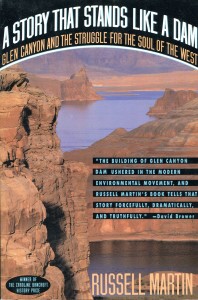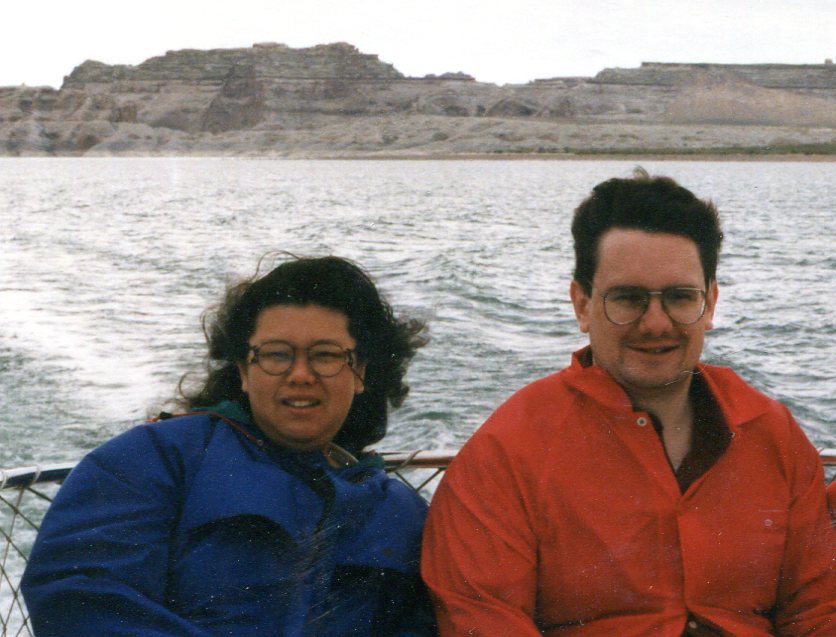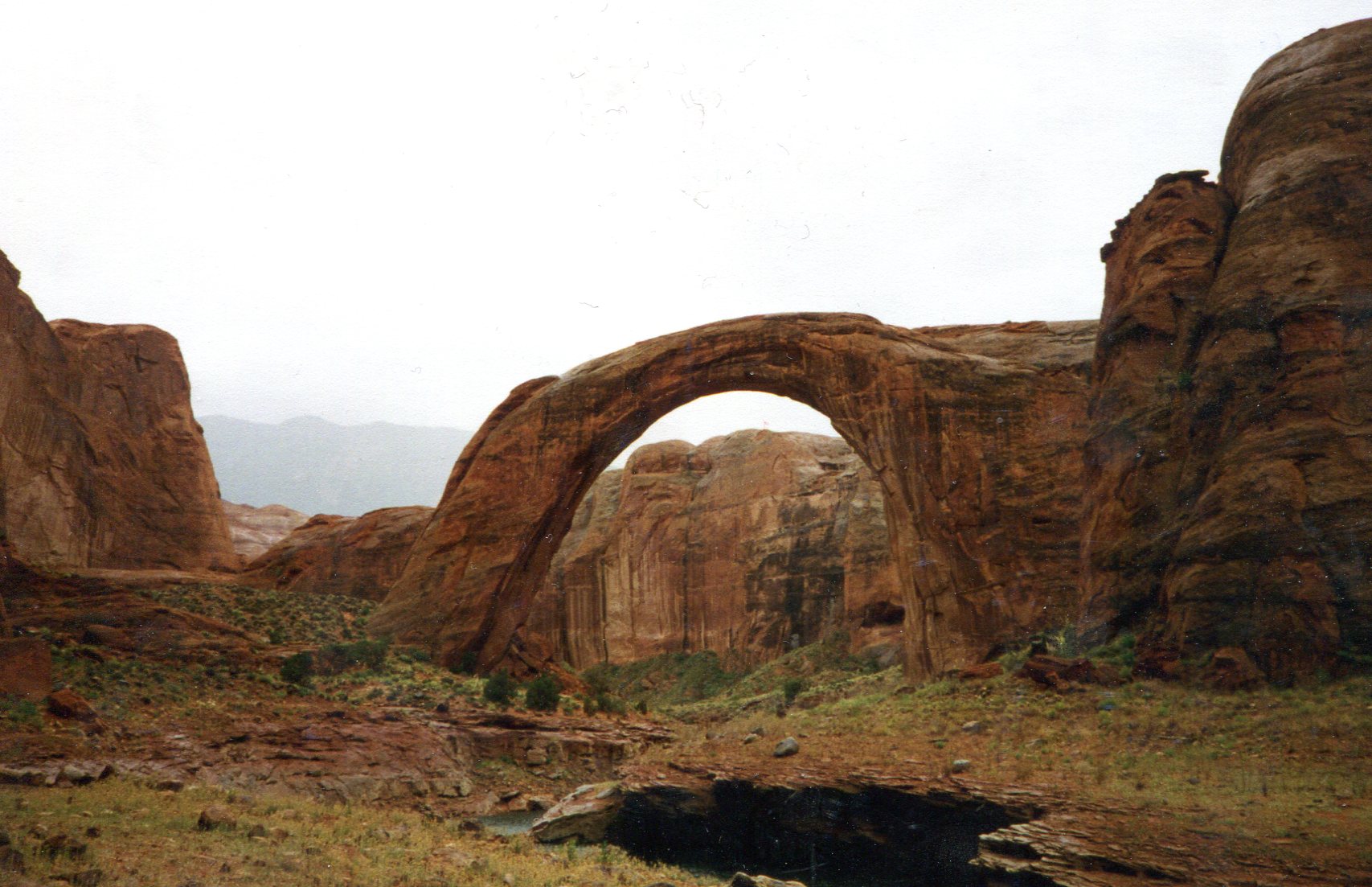In May 1997, we visited Arizona. First Phoenix, then up north to Flagstaff, Cameron and eventually Page, the town created to house workers who built the Glen Canyon Dam, which in turn created Lake Powell. It’s an impressive bit of work.

 I understand that Glen Canyon, now flooded by the lake, was even more impressive, but it’s something I’m not ever likely to see.
I understand that Glen Canyon, now flooded by the lake, was even more impressive, but it’s something I’m not ever likely to see.
The dam is 710 feet from bedrock and holds back more than 26.2 million acre-feet of water, or 9 trillion gallons, when Lake Powell is full. (Puny, though, when compared to Lake Superior’s 3 quadrillion gallons; but no dam holds it back.) It’s the last of the major North American dams, started in 1956 and completed in ’66. I suspect that had the U.S. Bureau of Reclamation delayed even a few years in starting, it would never have happened, so completely did public opinion change.
We took the tour, which goes inside the dam to see various features, such as one of the massive turbines. In the gift shop, I bought A Story That Stands Like a Dam by Russell Martin (1989), and read it during the rest of the trip, and at home. It too is an impressive piece of work. As an Amazon reviewer put it: “This book is absolutely loaded with information on Glen Canyon, Glen Canyon Dam, Lake Powell, and Page, Arizona — the nearby town of dambuilders. Its author has tried incredibly hard, and succeeded, at writing a book that is unbelievably fair, and that presents the controversial story of the building of Glen Canyon Dam in as truthful and as unbiased a light as possible.”
Maybe Lake Powell should be the Glen Canyon again. Some future decade, perhaps. You can make the case. But for now, Lake Powell is there, and one thing to do is take a boat ride.
 The boat we took had a destination: Rainbow Bridge National Monument, which is just across the border in Utah.
The boat we took had a destination: Rainbow Bridge National Monument, which is just across the border in Utah.
 The NPS says: “On May 30, 1910, President William Howard Taft created Rainbow Bridge National Monument to preserve this ‘extraordinary natural bridge, having an arch which is in form and appearance much like a rainbow, and which is of great scientific interest as an example of eccentric stream erosion.’
The NPS says: “On May 30, 1910, President William Howard Taft created Rainbow Bridge National Monument to preserve this ‘extraordinary natural bridge, having an arch which is in form and appearance much like a rainbow, and which is of great scientific interest as an example of eccentric stream erosion.’
“After the initial publicity, a few more adventurous souls journeyed to Rainbow Bridge. Teddy Roosevelt and Zane Grey were among those early travelers who made the arduous trek from Oljeto or Navajo Mountain to the foot of the Rainbow. Visiting Rainbow Bridge was made easier with the availability of surplus rubber rafts after World War II, although the trip still required several days floating the Colorado River plus a seven-mile hike up-canyon.”
Since the creation of Lake Powell, it’s an easy trip by boat. Good to see while you can. One of these days, like the Old Man in the Mountain in New Hampshire, which we saw about eight years before its collapse, erosion or some fool is going to bring the natural bridge down.